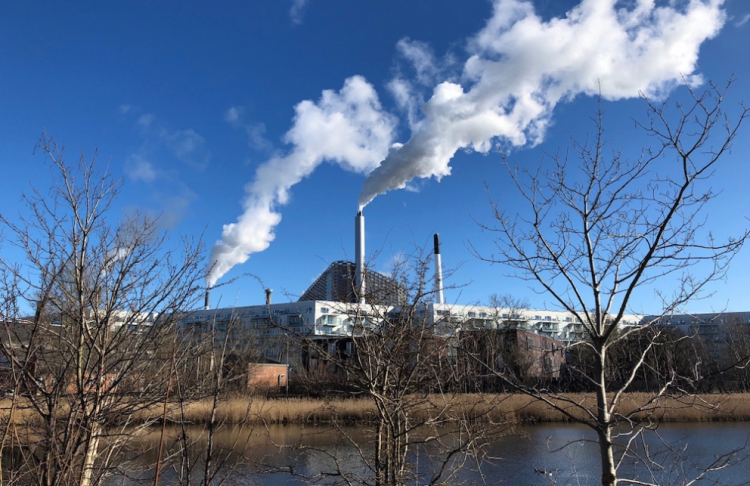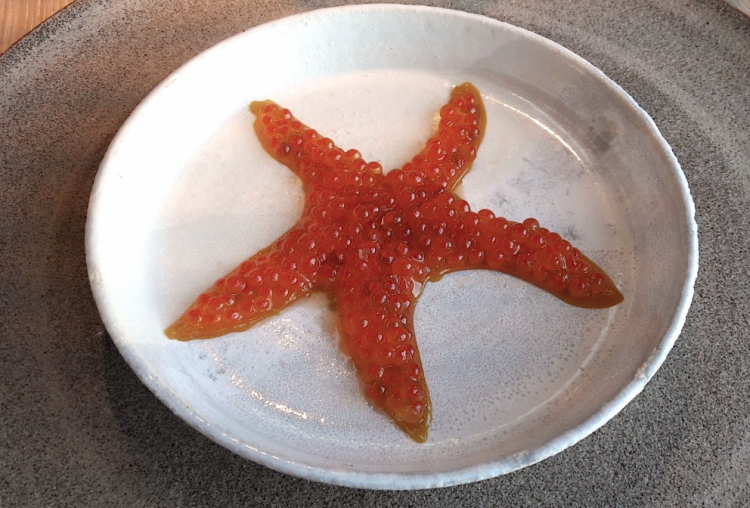The 100 pics' gallery starts by clicking the left picture up here
«Hello, what’s your name?». Lunch starts with the smile of a young woman welcoming guests outside. Behind her, a white and red work in progress tape brushes against her back. A narrow path starts here: to the right, the finished building, with doors and windows; to the left, a long wood fence topped with glass sloping roofs. In a few weeks’ time, these huts will host the new greenhouses, the bread making area and the test kitchen.
On the 22nd February 2018 the new Noma is still partly a building site. Rene Redzepi’s would have liked to open with everything already working, but there are still things that need to be done. He couldn’t wait for works to end, because every day without revenue weighs on their finances. Since the 24th February 2017, the last service at Noma 1.0, the chef of Macedonian descent has been paying dozens of employees without having a revenue (the pop-up opened in Mexico doesn’t count). Besides, it’s not like you could make the thousands of people who had already reserved a table online in November wait, having paid the tasting menu in advance -2250 Danish crowns (some 300 euros).
Even the induction stoves and the work counters only arrived at the last minute. «We first set foot to cook here two days before opening to the public. We finished fixing the last screws only minutes ago» later told us Italian Jessica Natali. They’ve made a huge effort to open just 24 hours after the planned date, on the 16th February instead of the 15th. How about the 80 people who made reservations for lunch and supper on the 15th? «We asked them to change the date. We had two extra services last Saturday», said maître and partner James Spreadbury, «and they understood». Who knows what kind of complaints, had it happened in Italy.
After all, people think differently in Denmark. For instance, how can we explain an Italian that in Copenhagen they’re happy to open a restaurant in front of an incinerator? The windows in the new dining room look over a lake and some smokestacks puffing columns of steam. It’s called Amager Bakke. Bjarke Ingels, the same architect of the new Noma, designed it. It’s a zero impact incinerator which in a few month’s time will open a ski slope on its roof. We’ll be able to work off our Nordic lunch while slaloming on waste.

Amager Bakke, the zero impact incinerator in front of the new Noma
Now back to this side of the lake. Let’s try to see beyond the fence. One important thing to mention is that, as we often read in the past few months, Noma 2.0 is not and will not be an
urban farm. There’s no restaurant in the world capable of building all they serve. And Noma is no exception:
Redzepi as usual will count on the magnificent produce of friendly farms
Søren Wiuff and
Kiselgaarden. «What we will do», reveals
Riccardo Canella, sous chef recently promoted to co-mananger of the
Test Kitchen, «is create vegetable gardens on top of the roof, and we’ll grow some exotic plants from Japan, Australia and Mexico in the greenhouses. Here we’ll conduct the experiments we’ll later develop on a larger scale outside our village».
"Village" is a keyword for this new era. The goal of
Redzepi and
Ingles was to create a small Scandinavian village, a creative community of people, each one with their “home”, focused on improving what they already know how to do. With one goal above all: «We don’t want to become the first restaurant in the world, but the best workplace in the world», the patron told the staff again and again. They want to change the reputation of one of the “cruellest” restaurants in the world, create friendly spaces, make everyone cohabit in a more harmonious way. The fact 10% of the places have special fees for students is also part of this work of "humanization" (
details in the photo gallery).
Of course the rhythm, these first few days after opening, is monstrous: «I go to sleep at 1, and wake up at 4», confesses
Canella. «Plus in the last three months we also had to create a new menu.
Rene wanted every dish to be new, no space for repeats from the past. We worked on products we knew, but with different techniques. In the space of 4 months we conceived 37 new dishes, of which we only chose the 17 currently in the menu. The chef asked us to follow 3 rules: high quality ingredients, high quality ideas, high quality executions».

Sea star, the first emblem of this new era
The result? They’re already fantastic, almost like on the last day before closing. From today to May the menu will focus on seafood, but it won’t be the same always, because even the ocean has its micro-seasons. As for us, we tasted a series of centennial clams, grilled cod heads, gigantic oysters, and horse mussels.
There’s a growing attention to products and to rounder flavours, compared to the original sour tones, the aesthetics of leaves, seaweed and musk, which many now copy. «Noma is reinventing itself», says
Canella, «I’m sure the offer will be less based on assembling elements, and more on pots and pans». We’ll see in June, when the tasting menu will be 100% vegetarian, a first. «Between one menu and the other, we’ll close for two weeks. The challenge will be having people leave without wishing for anything more». In the meantime, let’s enjoy the seafood photo gallery.
Translated into English by Slawka G. Scarso
See also
Arrivederci Noma, the last menu of the first era, in February 2017
Noma Caput Mundi, in 2012